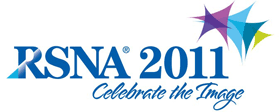
Abstract Archives of the RSNA, 2011
David C. Levin MD, Presenter: Consultant, HealthHelp
Board of Directors, Outpatient Imaging Affiliates, LLC
Vijay Madan Rao MD, Abstract Co-Author: Nothing to Disclose
Laurence Parker PhD, Abstract Co-Author: Nothing to Disclose
Andrea J. Frangos MPH, Abstract Co-Author: Nothing to Disclose
Jonathan H. Sunshine PhD, Abstract Co-Author: Nothing to Disclose
Normal
0
false
false
false
MicrosoftInternetExplorer4
/* Style Definitions */
table.MsoNormalTable
{mso-style-name:"Table Normal";
mso-tstyle-rowband-size:0;
mso-tstyle-colband-size:0;
mso-style-noshow:yes;
mso-style-parent:"";
mso-padding-alt:0in 5.4pt 0in 5.4pt;
mso-para-margin:0in;
mso-para-margin-bottom:.0001pt;
mso-pagination:widow-orphan;
font-size:10.0pt;
font-family:"Times New Roman";
mso-fareast-font-family:"Times New Roman";
mso-ansi-language:#0400;
mso-fareast-language:#0400;
mso-bidi-language:#0400;}
It has been shown that growth in imaging utilization has flattened considerably in recent years. While there has been virtually no further growth in MRI or Nuclear Medicine (which includes PET) since 2006, CT has continued to grow fairly rapidly. Our purpose was to see what role ED utilization of CT has played in that growth.
Normal
0
false
false
false
MicrosoftInternetExplorer4
/* Style Definitions */
table.MsoNormalTable
{mso-style-name:"Table Normal";
mso-tstyle-rowband-size:0;
mso-tstyle-colband-size:0;
mso-style-noshow:yes;
mso-style-parent:"";
mso-padding-alt:0in 5.4pt 0in 5.4pt;
mso-para-margin:0in;
mso-para-margin-bottom:.0001pt;
mso-pagination:widow-orphan;
font-size:10.0pt;
font-family:"Times New Roman";
mso-fareast-font-family:"Times New Roman";
mso-ansi-language:#0400;
mso-fareast-language:#0400;
mso-bidi-language:#0400;}
The nationwide Medicare Part B databases for 1998-2009 were searched. All CPT-4 codes for noninvasive diagnostic imaging were categorized by modality. Medicare’s place-of-service codes were used to identify exams performed in the 4 major settings where imaging is conducted – hospital inpatients, hospital outpatient facilities, private offices, and EDs. CT utilization rates per 1000 Medicare beneficiaries in these settings were calculated.
Normal
0
false
false
false
MicrosoftInternetExplorer4
/* Style Definitions */
table.MsoNormalTable
{mso-style-name:"Table Normal";
mso-tstyle-rowband-size:0;
mso-tstyle-colband-size:0;
mso-style-noshow:yes;
mso-style-parent:"";
mso-padding-alt:0in 5.4pt 0in 5.4pt;
mso-para-margin:0in;
mso-para-margin-bottom:.0001pt;
mso-pagination:widow-orphan;
font-size:10.0pt;
font-family:"Times New Roman";
mso-fareast-font-family:"Times New Roman";
mso-ansi-language:#0400;
mso-fareast-language:#0400;
mso-bidi-language:#0400;}
The overall (i.e. all 4 settings) Medicare utilization rate of CT increased from 274 per 1000 in 1998 to 636 in 2009. The CT compound annual growth rate (CAGR) was 9.7% from 1998 through 2006 and then dropped to 3.4% from 2007-2009. Utilization rates of CT in EDs rose from 27 per 1000 in 1998 to 143 in 2009. In the 4 settings, the 1998-2006 CT CAGRs were: ED 18.6%, inpatients 7.3%, hospital outpatients 7.0%, offices 15.2%. The 2007-2009 CT CAGRs in all 4 places-of-service dropped to the following: ED 10.5%, inpatients 1.4%, hospital outpatients 1.2%, offices 3.1% If one does not include the ED rates, the CT annual growth would be 8.4% from 1998-2006 and 1.6% from 2007-2009.
Normal
0
false
false
false
MicrosoftInternetExplorer4
/* Style Definitions */
table.MsoNormalTable
{mso-style-name:"Table Normal";
mso-tstyle-rowband-size:0;
mso-tstyle-colband-size:0;
mso-style-noshow:yes;
mso-style-parent:"";
mso-padding-alt:0in 5.4pt 0in 5.4pt;
mso-para-margin:0in;
mso-para-margin-bottom:.0001pt;
mso-pagination:widow-orphan;
font-size:10.0pt;
font-family:"Times New Roman";
mso-fareast-font-family:"Times New Roman";
mso-ansi-language:#0400;
mso-fareast-language:#0400;
mso-bidi-language:#0400;}
While other studies have shown that the MRI and Nuclear Medicine utilization rates have been stable since 2006, CT has continued to grow (overall annual growth of 3.4% from 2007-2009), albeit at a somewhat slower rate than prior to 2006. Both before and after 2006, CT annual growth in EDs was higher than in the other 3 settings, but the discrepancy was more pronounced from 2007-2009 (ED annual growth of 10.5% vs. 1.4% for inpatients, 1.2% for hospital outpatients, and 3.1% for offices). ED use is the major driver of CT growth and without it, the CT utilization rates would have stayed almost flat in recent years.
not applicable
Levin, D,
Rao, V,
Parker, L,
Frangos, A,
Sunshine, J,
Emergency Department (ED) CT Utilization Is the Primary Reason Why CT Remains the Most Rapidly Growing of the Major Advanced Imaging Modalities. Radiological Society of North America 2011 Scientific Assembly and Annual Meeting, November 26 - December 2, 2011 ,Chicago IL.
http://archive.rsna.org/2011/11004423.html

